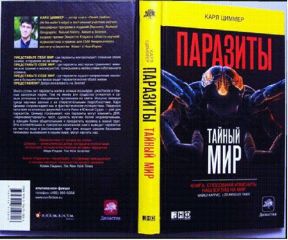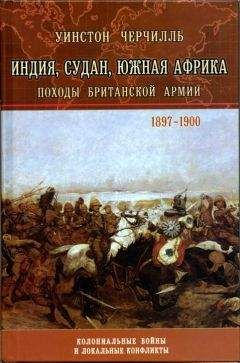Bastien, J. W. 1998. The kiss of death: Chagas' disease in the Americas. Salt Lake City: University of Utah Press.
Beckage, N. E. 1997. The parasitic wasp's secret weapon. Scientific American 277(5):82–87.
_____. 1998. Parasitoids and polydnaviruses. BioScience 48(4):305–311.
Bell, R. G. 1996. IgE allergies and helminth parasites: A new perspective on an old conundrum. Immunology and Cell Biology 74:337–345.
_____. 1998. The generation and expression of immunity to Trichinella spiralis in laboratory rodents. Advances in Parasitology 41:159–217.
Benz, G. W. In preparation. Evolutionary biology of siphonostome parasites of vertebrates (Siphonostomatoida: Copepoda).
Berdoy, M., J. P. Webster, and D. W. Macdonald, 2000. Fatal attraction in rats infected with Toxoplasma gondii. Proceedings of the Royal Society of London B, in press.
Berenbaum, M. R., and A. R. Zangerl. 1998. Chemical phenotype matching between a plant and its insect herbivore. Proceedings of the National Academy of Sciences 95:13743–13478.
Bingham, P. M. 1997. Cosuppression comes to the animals. Cell 90:385–387.
Bird, D. M. 1996. Manipulation of host gene expression by root-knot nematodes. Journal of Parasitology 82:881–888.
Blankespoor, C. L., P. W. Pappas, and T. Eisner. 1997. Impairment of the chemical defence of the beetle, Tenebrio molitor, by metacestodes (cysticercoids) of the tapeworm, Hymenolepis diminuta. Parasitology 115:105–110.
Bloom, B. R. 1979. Games parasites play: How parasites evade immune surveillance. Nature 279:21–26.
Boettner, G. H., J. S. Elkington, and C. J. Boettner, 2000. Effect of a biological control introduction on three nontarget native species of saturniid moths. Conservation Biology, in press.
Bogdan, C., and M. Rollinghoff. 1999. How do protozoan parasites survive inside macrophages? Parasitology Today 15:22–28.
Borst, P., W. Bitter, P. Blundell, M. Cross, R. McCulloch, G. Rudenko, M. C. Taylor, and F. van Leeuwen. 1997. The expression sites for variant surface glycoproteins of Trypanosoma brucei. In Trypanosomiasis and leishmaniasis: Biology and control, edited by G. Hide, J. C. Mottram, G. H. Coombs, and P. Holmes. New York: CAB International.
_____, R. McCulloch, F. Van Leeuwen, and G. Rudenko. 1995. Antigenic variation of malaria. Cell 82:1–4.
Bowler, P. J. 1983. The eclipse of Darwinism. Baltimore: Johns Hopkins University Press.
Brennan, W. 1995. Dehumanizing the vulnerable: When word games take lives. Chicago: Loyola University Press.
Brodeur, J., and L. E. M. Vet. 1994. Usurpation of host behavior by a parasitic wasp. Animal Behavior 48:187–192.
Brooks, D. R. 1992. Origins, diversification, and historical structure of the helminth fauna inhabiting neotropical freshwater stingrays (Potamotrygonidae). Journal of Parasitology 78(4):588–595.
_____, and Deborah A. McLennan. 1993. Parascript: Parasites and the language of evolution. Washington: Smithsonian Institution Press.
Brown, J. 1898. Parasitic wealth, or money reform: A manifesto to the people of the United States and to the workers of the world. New York: Charles Kerr & Co.
Bruce-Chwatt, L. J., and J. de Zulueta. 1980. The rise and fall of malaria in Europe. Oxford: Oxford University Press.
Bush, A. O., and C. R. Kennedy. 1994. Host fragmentation and helminth parasites: Hedging your bets against extinction. International Journal of Parasitology 24:1333–1343.
Campbell, W. C., ed. 1983. Trichinella and trichinosis. New York: Plenum.
Capo, V. A., D. D. Despommier, and R. I. Polvere. 1998. Trichinella spiralis: Vascular endothelial growth factor is up-regulated within the nurse cell during the early phase of its formation. Journal of Parasitology 84(2):209–214.
Caveney, S., H. Mclean, and D. Surry. 1998. Faecal firing in a skipper caterpillar is pressure-driven. Journal of Experimental Biology 201:121–133.
Chan, M. S. 1997. The global burden of intestinal nematode infections— fifty years on. Parasitology Today 13(11):438–443.
Clayton, D. H. 1991. The influence of parasites on host sexual selection. Parasitology Today 7(12):329–334.
Collis, S. A., and G. Walker. 1994. The morphology of the naupilar stages of Sacculina carcini (Crustacea: Cirripedia: Rhizocephala). Acta Zoologica 75(4):297–303.
Costanza, R., B. G. Norton, and B. D. Haskell, eds. 1992. Ecological health: New goals for environmental management. Washington, D.C.: Island Press.
Cox, F. E. G. 1994. The evolutionary expansion of the sporozoa. International Journal of Parasitology 24:1301–1316.
Crompton, D. W. T. 1999. How much human helminthiasis is there in the world? Journal of Parasitology 85:397–403.
Curtis, L. A. 1987. Vertical distribution of an estuarine snail altered by a parasite. Nature 235:1509–1511.
_____. 1990. Parasitism and the movement of intertidal gastropod individuals. Biological Bulletin 179:105–112.
Damian, R. 1987. The exploitation of host immune responses by parasites. Journal of Parasitology 73(1):1–13.
Damon, C. 1997. The mask of the parasite. Ann Arbor: University of Michigan Press.
Darwin, C. 1857. The origin of species. London: John Murray.
Dawkins, R. 1982. The extended phenotype: The gene as the unit of selection. New York: W. H. Freeman.
_____. 1990. Parasites, desiderata lists and the paradox of the organism. Parasitology 100:S63–S73.
Day, J. F., and J. D. Edman. 1983. Malaria renders mice susceptible to mosquito feeding when gametocytes are most infective. Journal of Parasitology 69:163–170.
DeBerardinis, R. J., J. L. Goodier, E. M. Ostertag, and H. H. Kazazian. 1998. Rapid amplification of a retrotransposon subfamily is evolving the mouse genome. Nature Genetics 20:288–290.
DeMoraes, C. M., W. J. Lewis, P. W. Pare, H. T. Alborn, and J. H. Tumlinson. 1998. Herbivore-infested plants selectively attract parasitoids. Nature 393:570–573.
Desmond, A., and J. Moore. 1991. Darwin: The life of a tormented evolutionist. New York: W. W. Norton.
Desowitz, R. S. 1983. New Guinea tapeworms and Jewish grandmothers. New York: W. W. Norton.
_____. 1991. The malaria capers. New York: W. W. Norton.
_____. 1997. Who gave Pinta to the Santa Maria? New York: W. W. Norton.
Despommier, D. D. 1990. Trichinella spiralis: The worm that would be virus. Parasitology Today 6(6):193–196.
Despres, L., D. Imbert-Establet, C. Combes, and F. Bonhomme. 1992. Molecular evidence linking hominid evolution to recent radiation of schistosomes (Platyhelminthes: Trematoda). Molecular Phylogenetics and Evolution 1:295–304.
DeVries, M. C., D. Rittschof, and R. B. Forward. 1989. Response by rhizocephalan-parasitized crabs to analogues of crab larval-release pheromones. Journal of Crustacean Biology 9:517–524.
Dobson, A. 1995. The ecology and epidemiology of rinderpest virus in Serengeti and Ngorongoro conservation area. In Serengeti II: Dynamics, management, and conservation of an ecosystem, edited by A. R. E. Sinclair and P. Arcese. Chicago: University of Chicago Press.
Doolittle, W. F. 2000. Uprooting the tree of life. Scientific American 282:90–95.
Drummond, H. 1883. Natural law in the spiritual world. London: Hodder and Stoughton.
Dunbar, R. 1996. Grooming, gossip, and the evolution of language. Cambridge, Massachusetts: Harvard University Press.
Durden, L. A., and J. E. Keirans. 1996. Host-parasite coextinction and the plight of tick conservation. American Entomologist (Summer):87–91.
Dushay, M. S., and N. E. Beckage. 1993. Dose-dependent separation of Cotesia congregata—associated polydnavirus effects on Manduca sexta larval development and immunity. Journal of Insect Physiology 39(12):1029–1040.
Dybdahl, M. F., and C. M. Lively. 1998. Host-parasite coevolution: Evidence for rare advantage and time-lagged selection in a natural population. Evolution 52(8):1057–1066.
Eberhard, W. G. 1990. Evolution in bacterial plasmids and levels of selection. Quarterly Review of Biology 65:3–22.
Ebert, D. 1994. Virulence and local adaptation of a horizontally transmitted parasite. Science 265:1084–1088.
_____, and E. A. Herre. 1996. The evolution of parasitic diseases. Parasitology Today 12(3):96–101.
Evans, W. S., M. C. Hardy, R. Singh, G. E. Moodie, and J. J. Cote. 1992. Effects of the rat tapeworm Hymenolepis diminuta on the coprophagic activity of its intermediate host, Tribolium confusum. Canadian Journal of Zoology 70:2311–2314.
_____, A. Wong, M. Hardy, R. W. Currie, and D. Vanderwel. 1998. Evidence that the factor used by the tapeworm, Hymenolepis diminuta, to direct the foraging of its intermediate host, Tribolium confusum, is a volatile attractant. Journal of Parasitology 84:1098–1101.
Ewald, P. W. 1994. Evolution of infectious disease. Oxford: Oxford University Press.
_____. 1995. The evolution of virulence: A unifying link between parasitology and ecology. Journal of Parasitology 81(5):659–669.
Farley, J. 1972. The spontaneous generation controversy (1700–1860): The origin of parasitic worms. Journal of the History of Biology 5(1):95–125.
_____. 1977. The spontaneous generation controversy from Descartes to Oparin. Baltimore: Johns Hopkins University Press.
Feener, D. H., and B. V. Brown. 1997. Diptera as parasitoids. Annual Review of Entomology 42:73–97.
Foley, M., and L. Tilley. 1995. Home improvements: Malaria and the red blood cell. Parasitology Today 11(11):436–439.
_____. 1998. Protein trafficking in malaria-infected erythrocytes. International Journal of Parasitology 28:1671–1680.
Foster, W. D. 1965. A history of parasitology. Edinburgh: E. & S. Livingstone.
Fox, J. A., M. F. Dybdahl, J. Jokela, and C. M. Lively. 1996. Genetic structure of coexisting sexual and clonal subpopulations in a freshwater snail (Potamopyrgus antipodarum). Evolution 50:1541–1548.
Friedman, M. J., and W. Trager. 1981. The biochemistry of resistance to malaria. Scientific American (March):156–164.
Fuhrman, J. A. 1999. Marine viruses and their biogeochemical and ecological effects. Nature 399:541–548.
Gardner, S. L., and M. L. Campbell. 1992. Parasites as probes for biodiversity. Journal of Parasitology 78(4):596–600.
Gemmill, A. W., M. E. Viney, and A. F. Read. 1997. Host immune status determines sexuality in a parasitic nematode. Evolution 51(2):393–401.
Gilbert, J., E. Mouchel-Vielh, and J. S. Deutsch. 1997. Engrailed duplication events during the evolution of barnacles. Journal of Molecular Evolution 44:585–594.
Ginsburg, H., S. A. Wray. and P. G. Bray. 1999. An integrated model of chloroquine action. Parasitology Today 15:357–360.
Glenner, H., and J. T. Høeg. 1995. A new motile, multicellular stage involved in host invasion by parasitic barnacles (Rhizocephala). Nature 377:147–150.
_____, A. Klysner, and B. Brodin Larsen. 1989. Cypris ultrastructure, metamorphosis and sex in seven families of parasitic barnacles (Crustacea: Cirripedia: Rhizocephala). Acta Zoologica 23:229–242.
_____, J. T. Høeg, J. J. O'Brien, T. D. Sherman, 2000. Invasive vermigon stage in the parasitic barnacles Loxothylacus texanus and L. panopaei (Sacculinidae): closing of the rhizocephalan life-cycle. Marine Biology, in press.
Good, M. F., D. C. Kaslow, and L. H. Miller. 1998. Pathways and strategies for developing a malaria blood-stage vaccine. Annual Review of Immunology 16:57–87.
Grenfell, B. T. 1992. Parasitism and the dynamics of ungulate grazing systems. The American Naturalist 139:907–929.
Gross, P. 1993. Insect behavioral and morphological defenses against parasitoids. Annual Review of Entomology 38:251–73.
Grove, D. I. 1990. A history of human helminthology. London: CAB International.
Hamilton, W. D., and M. Zuk. 1982. Heritable true fitness and bright birds: A role for parasites? Science 218:384–387.
Harris, A. R. C., R. J. Russell, and A. D. Charters. 1984. A review of schistosomiasis in immigrants in Western Australia, demonstrating the unusual longevity of Schistosoma mansoni. Proceedings of the Royal Society of Tropical Medicine and Hygiene 78:385–388.
Hart, B. L. 1994. Behavioral defense against parasites: Interaction with parasite invasiveness. Parasitology 109:S139–S151.
_____. 1997. Behavioral defense. In Host-parasite evolution: General principles and avian models, edited by D. H. Clayton and J. Moore. Oxford: Oxford University Press.
_____, and L. A. Hart. 1994. Fly switching by Asian elephants: Tool use to control parasites. Animal Behavior 48:35–45.
_____, L. A. Hart, M. S. Mooring, and R. Olubayo. 1992. Biological basis of grooming behavior in antelope: The body-size, vigilance and habitat principles. Animal Behavior 44:615–631.
Hartl, D. L., A. R. Lohe, and E. R. Lozovskaya. 1997. Modern thoughts on an ancient mariner: function, evolution, regulation. Annual Review of Genetics 31:337–358.
Hartnoll, R. G. 1967. The effects of sacculinid parasites on two Jamaican crabs. Journal of the Linnean Society (Zoology) 46:275–295.





